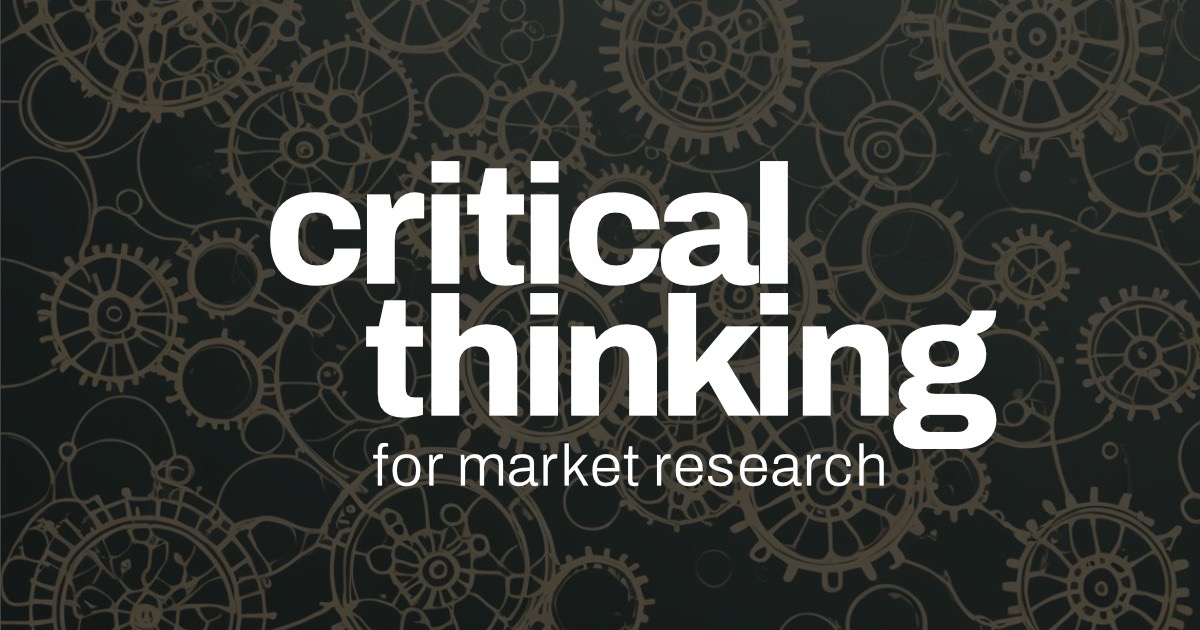
AFFILIATE PARTNER INSIDER
Candid insights
Not all partnerships are equal. A smart affiliate partner prioritizes alignment over commissions. Relevance beats reach every time. Build authority, not just links.
Affiliate Partner Insider
1. Affiliate Partnerships:
What is Affiliate Marketing?

Affiliate marketing is a performance-based online advertising model where businesses (“merchants” or “advertisers”) reward external partners (“affiliates” or “publishers”) for generating traffic, leads, or sales through the affiliate’s promotional efforts.
Overall, it’s a symbiotic ecosystem built on trackable outcomes, not upfront fees.
The general sentiment surrounding affiliate marketing is mixed, leaning cautiously positive but with notable skepticism. Many view it as a legitimate way to earn income by promoting products or services, appreciating its low entry barriers and potential for passive income.
Small businesses and influencers often see it as a cost-effective marketing strategy, with 81% of brands using affiliate programs, according to a 2023 industry report. It’s praised for its performance-based model, where affiliates are paid only for results, aligning incentives.
However, there’s significant distrust due to spammy practices, overly aggressive promotions, and low-quality content pushed by some affiliates. X posts often highlight frustration with “get-rich-quick” schemes that oversimplify the process, with users calling out misleading claims or shady tactics like cookie stuffing.
Critics argue it can prioritize profit over authenticity, especially when influencers fail to disclose partnerships, eroding trust. Data suggests 65% of consumers are wary of affiliate links due to perceived bias.
Sentiment varies by audience: marketers and entrepreneurs tend to embrace it, while consumers are more skeptical, valuing transparency. The practice is generally accepted but thrives best when done ethically.
Affiliate Marketing and Consumer Trust
Consumer trust issues in affiliate marketing primarily stem from lack of transparency, perceived bias, and deceptive practices. Many consumers—around 65% based on recent surveys—distrust affiliate links because they suspect influencers prioritize commissions over genuine recommendations.
Failure to disclose affiliate relationships, as required by FTC guidelines, fuels this skepticism; for example, only 30% of influencers consistently disclose partnerships, per a 2024 study. Spammy tactics, like low-quality review sites or exaggerated claims, further erode confidence, with X users frequently criticizing “scammy” affiliate content. Misleading “get-rich-quick” schemes tied to affiliate marketing also contribute, as they often overpromise results.
Consumers are more likely to trust affiliates who provide authentic, well-researched content and clear disclosures, but widespread shady practices continue to undermine credibility.
Affiliate Partner Platforms
Below is a summary of Impact.com and PartnerStack, two reputable affiliate partnership platforms which together provide a wide range of both products and services. With impact being the more diverse of the two, PartnerStack is ideal for B2B software solutions.

1. Impact.com
Overview: Impact.com is a leading all-in-one partnership management platform, widely recognized for streamlining affiliate, influencer, and referral marketing. It serves over 3,000 brands globally (e.g., Levi’s, Walmart) and is praised for its robust tracking and fraud detection, making it a top choice for 2025.
Key Features:
- Partnership Management: Manages affiliates, influencers, and B2B partnerships with automation for recruiting, onboarding, and payouts.
- Tracking and Analytics: Advanced cross-device tracking, non-cookie-based attribution, and real-time reporting ensure accurate partner contributions.
- Fraud Detection: Machine learning identifies malicious actors (e.g., fake app installs), enhancing trust and compliance with regulations like the FTC’s disclosure rules.
- Marketplace: Connects affiliates with thousands of brands across retail, travel, and finance, with tools for customized contracts and branded interfaces.
- Integrations: Seamless integration with Shopify, Salesforce, and social platforms like Instagram, supporting GDPR and DSA compliance.
Strengths:
- Highly scalable for mid-sized to enterprise businesses, with 25% average affiliate revenue growth in the first 90 days.
- Transparent reporting supports ethical disclosures, addressing consumer distrust (65% of consumers are skeptical of affiliate links).
- Positive user feedback for its clear dashboard and accessible media tools.
Weaknesses:
- Pricing starts at $30/month or 3% of revenue, which can be costly for small businesses.
- Complex setup and interface may overwhelm beginners.
- Mixed reviews on support; some users report delays or unresponsiveness, with TrustPilot ratings at 1.4 stars vs. G2’s higher scores.
Best For: Established brands and affiliates needing advanced analytics and global reach, particularly in retail and ecommerce.
Consumer Trust Alignment: Impact’s fraud detection and transparent reporting align with FTC and GDPR requirements, reducing deceptive practices and building trust through clear attribution.
2. PartnerStack
Overview: PartnerStack is a partner ecosystem platform tailored for B2B SaaS companies, managing affiliates, referrals, and resellers. It’s lauded for its user-friendly UI/UX and is a top alternative to Impact for SaaS-focused businesses.
Key Features:
- Ecosystem Management: Supports affiliates, referrals, resellers, and co-sell partnerships, with a marketplace of 80,000+ active partners.
- Automation: Automates onboarding, attribution, and payouts, with a robust API for vendors and affiliates (e.g., Slack alerts for referrals).
- Customizable Programs: Offers multi-level payout scenarios and detailed reporting to optimize partner performance.
- SaaS Focus: Designed for SaaS go-to-market strategies, including free trials and extended trials, unlike Impact’s broader B2C focus.
- Marketplace: Connects SaaS brands with partners, offering free access for publishers to join programs.
Strengths:
- Best-in-class UI/UX, praised for simplicity and partner engagement (e.g., automated emails based on activity).
- Strong SaaS-specific features, with 600+ B2B SaaS brands using it for revenue growth.
- API access for affiliates enhances engagement, addressing consumer demand for authentic partnerships.
Weaknesses:
- High cost, starting at five figures annually, making it less accessible for small businesses or non-SaaS brands.
- Less suited for traditional B2C affiliate marketing compared to Impact.
- Limited focus on influencer marketing compared to Impact’s broader partnership scope.
Best For: B2B SaaS companies looking to scale partnerships with agencies, affiliates, and resellers.
Consumer Trust Alignment: PartnerStack’s focus on vetted, high-intent partners and transparent attribution reduces low-quality promotions, aligning with consumer preferences for authenticity (74% trust disclosed promotions). Its SaaS-specific tools ensure relevant promotions, countering skepticism about biased content.
In-house Affiliate Partner Programs
Beyond major specialized affiliate networks, many brands manage their partner programs using a more hands-on, in-house approach. We’ve collaborated with numerous successful in-house programs, and the following brands stand out for their commitment to quality products and services.
Discover their offerings below:
LiveChat
LiveChat provides powerful, real-time customer engagement software. Their flagship live chat solution enables businesses to connect instantly with website visitors, offering support, capturing leads, and boosting sales conversions. Features include chat routing, canned responses, file sharing, detailed analytics, and integrations with popular CRM and helpdesk tools.
Fiverr
Fiverr is the world’s largest marketplace for digital services. It connects businesses with freelance talent offering “Gigs” across hundreds of categories—from graphic design, writing, and programming to marketing, video editing, and voiceovers. Its user-friendly platform simplifies finding, hiring, and managing freelance projects at various price points.
Freshworks
Freshworks delivers intuitive, scalable SaaS products designed to modernize business operations. Their suite includes Freshdesk (customer support ticketing), Freshsales (CRM), Freshservice (IT service management), and Freshmarketer (marketing automation). These integrated tools help businesses of all sizes streamline workflows, enhance customer engagement, and drive growth.
Kinsta
Kinsta offers premium, high-performance managed WordPress hosting powered by the Google Cloud Platform. Focused on speed, security, and simplicity, Kinsta provides features like automatic scaling, daily backups, advanced caching, a custom dashboard, 24/7 expert support, and an optimized stack specifically engineered for WordPress sites and WooCommerce stores.
Jotform
Jotform is a versatile online form builder that empowers users to create custom forms, surveys, quizzes, and payment collection tools without coding. With thousands of templates, drag-and-drop functionality, robust form analytics, and seamless integrations (like PayPal, Stripe, and Google Sheets), Jotform simplifies data collection and workflow automation for businesses and individuals.
2. Affiliate Partner Strategy
Personality Matching
Finding the right affiliate partners isn’t just about surface-level relevance or sharing an audience with “similar intent.” While audience overlap is a starting point, truly successful, high-converting partnerships thrive on deeper alignment at the persona level.
The validity of an affiliate partnership lies in the fact that both the brand and the affiliate authentically speak to the same core customer personas – understanding their motivations, pain points, language, and trusted information sources.
Why Personas Matter More Than Broad Audiences.
Predicting Performance: Partnerships based on strong persona alignment are far more likely to generate consistent, high-quality conversions (sales, leads, sign-ups) because the affiliate’s content inherently pre-qualifies the audience for the brand’s solution.
Beyond Demographics: An audience might share demographics (age, location, job title), but personas define why they buy, what they fear, and how they make decisions. Matching here ensures messaging resonates psychologically.
Authenticity & Trust: Affiliates build trust by deeply understanding their audience’s persona. A brand aligned with that persona feels like a natural, authentic recommendation, not just an ad. This trust is the engine of conversion.
Relevance in Context: A “tech-savvy professional” persona might need different messaging from a “budget-conscious freelancer” persona – even if they both could use the same software. Persona matching ensures the offer and messaging fit the specific context the affiliate creates.
How Persona Matching Works
in Practice
- The Brand’s Perspective: The brand defines its ideal customer personas (e.g., “Sarah, the overwhelmed SaaS startup founder,” or “David, the growth-focused e-commerce marketer”).
- The Affiliate’s Perspective: The affiliate understands the primary personas they authentically engage (e.g., their content consistently solves problems for “Sarah” or speaks the language of “David”).
- The Match: The partnership focuses on connecting brands whose target personas perfectly overlap with the core personas an affiliate naturally and effectively serves. The affiliate isn’t just reaching an audience; they’re reaching the right mindset of audience for that specific brand.
The Result of Effective
Persona Matching
Combined efforts in communication become exponentially more powerful. Instead of generic promotions, the affiliate creates content that speaks directly to the shared persona’s needs, using language they trust. The brand’s offer appears as the natural solution the affiliate’s persona has been seeking. This deep resonance is what ultimately drives sustainable sales and conversions.
In essence: Forget just audience overlap. Seek persona synergy. The most valid and profitable affiliate partnerships are built on a shared understanding of, and connection to, the same human beings behind the data points.
Revenue sharing arrangements in affiliate marketing

Revenue sharing arrangements in affiliate marketing refer to the way commissions or payments are structured between the merchant (brand) and the affiliate (partner) based on the results generated by the affiliate’s promotional efforts.
1. Performance-Based Commissions
Affiliates earn payments only when their marketing efforts lead to measurable outcomes such as:
- Sales (most common)
- Leads or sign-ups
- Traffic with high intent (sometimes monetized)
This ensures that merchants pay for actual results, aligning incentives between brands and affiliates.
2. Commission Structures
- Percentage of Sale: The affiliate receives a fixed percentage of the revenue generated from sales they referred. For example, 10-30% of the purchase price.
- Flat Fee Per Action: The affiliate receives a fixed dollar amount per lead, sign-up, or sale regardless of order size.
- Tiered or Multi-Level Payouts: Commissions increase based on affiliate performance or volume. Some platforms and programs offer increasing rates as affiliates generate more revenue.
- Recurring Commissions: In subscription or SaaS models, affiliates may earn ongoing commissions as customers continue paying, reflecting the customer’s lifetime value.
3. Platform-Specific Revenue Sharing
Platforms like Impact.com and PartnerStack enable flexible revenue sharing models:
Impact.com offers customizable contracts allowing brands to set tailored commission percentages or flat fees for various partner types (affiliates, influencers, resellers).
PartnerStack particularly supports SaaS businesses, where recurring commissions for subscription renewals or upgrades are common.
4. Factors Affecting Revenue Sharing Terms
- Industry and product type: Physical products often have fixed percentage commissions; SaaS programs may favor recurring revenue shares.
- Affiliate quality and trust: Brands may offer better revenue shares to affiliates with proven traffic quality and conversions.
- Program goals: Higher-risk or new products may offer higher commissions to incentivize affiliates.
5. Best Practices for Revenue Sharing
- Clearly define commission rates and qualification criteria upfront in the affiliate agreement or platform contract.
- Use transparent tracking and reporting tools (impact.com, PartnerStack dashboards) to ensure accurate commission attribution.
- Incorporate recurring or lifetime value considerations to encourage affiliates to promote quality customers who drive long-term revenue.
- Consider tiered or bonus payouts to reward top-performing affiliates and motivate sustained partnership.
Summary
Revenue sharing arrangements are foundational to affiliate marketing’s performance model. They vary widely across programs but typically involve paying affiliates a percentage or amount based on sales or leads generated. Platforms and brands tailor these arrangements to maximize alignment with business goals, promote trust and fairness, and incentivize affiliates to drive high-quality, sustainable conversions.
3. Affiliate Partner Tools and Resource
Tools Affiliates Use
Besides our plush notebook there are many tools used by Affiliate Marketers and Brand Managers, however today we will look at the essential tools for daily operation.
To start affiliate marketing effectively, you need tools that simplify program management, content creation, traffic generation, and performance tracking.
Budget-Friendly Starter Kit
| Category | Try Free Tools | *Low-Cost Startup |
|---|---|---|
| Program Access | Shopify Collabs | Impact |
| Content/Writing | Canva, Merlin | Hemingway Desktop ($20) |
| SEO/Traffic | Google Analytics | Ubersuggest ($29/month) |
| ConvertKit Mailchimp Beehiive | ConvertKit ($9/month) | |
| Hosting | – | SiteGround ($3.99/month) |
*prices correct at time of writing
Essential tools
for Affiliate Marketing
Affiliate marketing hinges on four interdependent functions, each critical to building a sustainable, profitable business.
Program Management
Program Management serves as the strategic foundation, focusing on selecting the right affiliate partnerships and nurturing relationships with brands or networks. This involves rigorous research to identify high-alignment offers, negotiating commission structures, ensuring compliance with regulations (like FTC disclosures), and resolving tracking disputes.
Without thoughtful program management, even exceptional content or traffic may promote mismatched products, wasting effort and eroding audience trust.
Content Creation
Content Creation transforms these partnerships into value-driven narratives that resonate with your audience. It’s the engine of trust and authority, where reviews, tutorials, blogs, or videos educate readers while contextualizing affiliate promotions.
Quality content doesn’t just push products—it solves problems, answers questions, and organically guides users toward solutions. SEO optimization ensures this content reaches search-driven audiences, while adaptability across formats (e.g., repurposing a YouTube tutorial into a blog) maximizes its lifespan and reach.
Traffic Generation
Traffic Generation fuels this ecosystem by directing targeted visitors to your content. Whether through organic search, social media, email lists, or paid ads, this pillar focuses on attracting audiences with genuine intent. Strategic channel selection (e.g., Pinterest for visual products, SEO for evergreen reviews) and audience targeting (e.g., “budget home office gear” versus “luxury gaming setups”) ensure efficiency.
Crucially, traffic generation also builds owned audiences—like email subscribers—creating repeatable pathways to conversions beyond algorithmic whims.
Performance Tracking
Finally, Performance Tracking acts as the central nervous system, quantifying success and guiding optimization. It attributes clicks to conversions, calculates ROI metrics like Earnings Per Click (EPC) or Lifetime Value (LTV), and identifies high-performing content, offers, or traffic sources.
Tools like Google Analytics or affiliate network dashboards reveal friction points—say, a landing page with high bounce rates—and validate what’s working. Without rigorous tracking, decisions become guesswork; with it, you refine program choices, content angles, and traffic investments to compound growth.
Together, these functions form a self-reinforcing cycle: Program management selects viable offers; content creation packages them authentically; traffic generation delivers engaged audiences; and performance tracking illuminates improvements—which then elevates program strategy, content quality, and traffic precision.
Neglecting any pillar risks inefficiency, but mastering their synergy transforms affiliate marketing from a side hustle into a scalable engine.
4. Affiliate Vagary:
Affiliate Partner Vagaries
Partnering with brands as an independent affiliate marketer—whether you operate solo, run a content studio, publish as part of a collaborative team, or work through an agency—can indeed yield rewarding, sustainable income streams when conversions stack up consistently. It’s true that earning a modest supplemental income is well within reach for most diligent affiliates.
However, beneath that promising surface lie numerous challenges that demand strategic planning, diligent execution, and a healthy dose of perseverance. You’ll need to invest time in audience research, continuously refine your creative assets, optimize your conversion funnels, and stay agile in the face of ever‑shifting platform algorithms and compliance guidelines.
Trust and transparency between affiliate and brand are essential, since the digital ecosystem is rife with opportunities for mischief or misreporting. When performance metrics suddenly don’t line up—say, Product A earns zero sales despite 20,000 clicks in a month, while Product B nets multiple conversions from just 5,000 clicks—it’s tempting to suspect foul play.
But jumping straight to “someone’s cheating” overlooks more probable explanations: differences in landing‑page quality, mismatched audience intent, inconsistent tracking implementation, or even a temporary inventory or pricing glitch on the merchant’s end.
It’s not always “affiliate fraud.”
Brands may see an affiliate drive clicks aggressively but neglect to ensure that their tracking pixels or post‑click experiences are synchronized with your campaign. Conversely, an affiliate might overestimate audience affinity for a high‑traffic but low‑intent segment—clicks abound, but true buyers remain scarce.
The Fraud Solution:
Establish a clear, mutually agreed‑upon tracking and reporting framework before launch. Request test transactions, review your tracking setup in a staging environment, and agree on attribution windows (e.g., last click vs. multi‑touch). When results diverge wildly between similar offers, initiate a joint audit: examine source URLs, device segmentation, and historical conversion patterns. A simple shared dashboard—built in Google Data Studio, Funnel.io, or a similar tool—can surface anomalies in real time and keep both parties accountable.
Another common objection is that affiliate marketing inherently pits you against other high‑volume publishers, making it difficult for smaller players to compete on click volume alone. While it’s true that mega‑affiliates can leverage deep pockets for paid traffic, you can still thrive by emphasizing niche authority, content depth, and building long‑term audience trust. Instead of chasing the highest‑commission offer, prioritize programs that align tightly with your audience’s needs and where you can add genuine perspective or hands‑on reviews.
High commissions
don’t guarantee high ROI.
A 75% payout looks tempting on the surface, but if the product doesn’t resonate with your community or if the checkout flow frustrates buyers, you’ll end up with high churn and low lifetime value.
The ROI Solution:
Focus on lifetime‑value metrics rather than upfront EPC (earnings per click). Run split tests between competing offers and track not only first‑purchase conversions but also repeat‑purchase rates, refund rates, and customer satisfaction scores. Present these findings to your brand partners—this data‑driven approach bolsters your credibility and often leads to deeper, more lucrative partnerships (think exclusive promo codes or higher tiers of commission).
Finally, many affiliates overlook the power of continuous communication. Regular check‑ins with brand managers and creative teams turn one‑off campaigns into co‑branded communities. Share qualitative feedback—comments from your audience, screenshots of customer questions, or even survey results—to help your partners refine their messaging or product positioning. When you demonstrate that you’re not just a traffic driver but a true brand ambassador, you earn the kind of loyalty that turns one‑time spikes into stable, recurring revenue.
By proactively addressing tracking discrepancies, prioritizing high‑alignment partnerships over flash‑in‑the‑pan commissions, and nurturing open, data‑backed dialogue with your brands, you transform the vagaries of the digital marketplace into predictable, scalable affiliate success. Keep iterating, keep testing, and keep your audience’s best interests front and center—and the dividends will follow.
Disclosure: For your information, please note that products and services mentioned in our content may include links to businesses we have partnered with or have other association with. So when you sign up or make a purchase with our link, you also help support Click Nurturing with our continuing efforts to provide helpful content for free.
Affiliate Partner Inside FAQ
-
Is affiliate marketing really a viable way to earn money?
Yes, but manage expectations. Top affiliates earn 6–7 figures, but most beginners make $0–$500/month in their first year. Success requires consistent effort in content creation, audience building, and optimization. It’s a legitimate business model—not a “get-rich-quick” scheme.
-
How much money do I need to start?
You can launch with $50–$200 for essentials:
Domain + hosting ($3–$15/month)
Basic tools (free tiers of Canva, Grammarly, Google Analytics)Avoid overspending early. Focus on learning, not expensive software. -
Do I need a website or social media following?
A website is strongly recommended for long-term control and SEO. Social media (TikTok, Instagram, Pinterest) can drive traffic but platforms change algorithms abruptly. Own your audience via an email list.
-
How do I choose profitable niches?
Prioritize passion + profitability:
Passion: You’ll create content for years—pick something you enjoy.
Profitability: Validate demand via Google Trends, Amazon Best Sellers, or Semrush.Example niches: Sustainable home goods, budget tech, specialized SaaS. -
How long until I see my first commission?
Typically 3–6 months if you:
Publish 15–20 high-quality blog posts/videos
Optimize for SEO
Promote activelyTip: Track “micro-wins” (traffic growth, email sign-ups) to stay motivated. -
Can I do this without technical skills?
Absolutely. Use:
WordPress (drag-and-drop builders like Elementor)
YouTube tutorials for SEO/tracking
AI tools (ChatGPT for outlines, Notion AI for research)Advanced tech comes later. -
Is the market too saturated?
Saturation is a myth. Audiences crave fresh voices and deeper expertise. Example: Instead of “best vacuums,” target “quiet vacuums for apartment dogs.” Micro-niches dominate.
-
What’s the #1 mistake beginners make?
Promoting everything. Focus on 1–2 trusted programs aligned with your audience. Spamming low-quality offers destroys trust.
-
Do I need to disclose affiliate links?
Yes—legally and ethically. Use phrases like “This post contains affiliate links, which fund my research.” Non-compliance risks FTC fines and audience backlash.
-
Can AI replace human affiliates?
AI aids efficiency (content outlines, data analysis), but authenticity wins. Personal experiences, honest reviews, and audience relationships can’t be automated.
-
How do I stand out against big competitors?
Depth > breadth. A single definitive guide (e.g., “Ultimate Van Life Solar Setup”) outperforms 50 generic posts. Leverage your unique perspective or underserved angles.
-
Should I use paid ads from day one?
Not initially. Master organic traffic first (SEO, Pinterest, YouTube). Paid ads require testing budgets and conversion expertise—begin once you have proven funnels.






